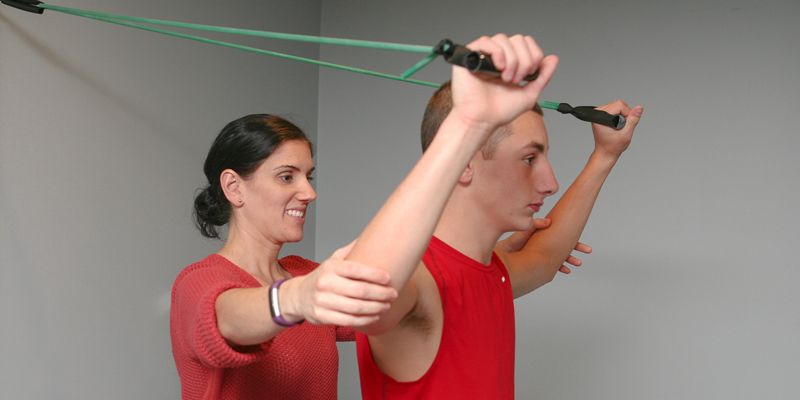
Functional training is the method in which physical therapists retrain clients with movement disorders using exercises and interventions that resemble tasks that the clients do every day.
The focus of this type of exercise program is context specific activity that is meaningful to the client. In other words, it’s about doing exercises that resemble every day movements so that the client can start to make changes in the fundamental movements they do.
If the client understands the relationship of the specific exercise with daily movement, then they are more likely to be successful in improving their dysfunction. Functional training involves exercises that replicate anything from lifting small children to running. The focus of this type of training is meant to meet the activity demands and goals specific to the client whether a client wants to return to crossfire or hold a child without pain.
Functional training involves neuromuscular retraining or retraining the brain and the body. When exercise is used in the context of activity, it can help clients to meet their goals faster. When the brain and the body work together in this manner, the brain and the body are more likely to recognize proper and improper movement during other activities throughout the day.
Functional training is included in physical therapy treatment in order to help clients recovery from injury, return to their jobs, activities of daily living or sport, and to recover from surgery in the hopes that they will recover with better long term success because it is ultimately teaching then to move differently.
If a client has young children and they have beck pain every time they get up off the floor from changing a diaper, their training might revolve around lifting and kneeling, sit to stand, carrying, etc.
This client might learn a bridge exercise for hip strength but then progress to an exercise in kneeling where they are working on bridging from low kneel to high kneel and then progress to half kneeling to staining and finally to lunges.
Each exercise involved drive from the hips but progressing look more like realistic motion that are needed to get off the floor with less strain on the back and greater use of the hips.
Functional training is designed to meet the individual needs of the client with consideration to their goals. Therefore it is also used in the context of sports specific training.
Since sports are an integral part of many recreational or professional athlete’s days, day to day activity is sport centric. Thus, functional training would need to be sport centric.
For instance, if a marathon running is coming for treatment of an Achilles tendinitis, the therapist’s long term goal would be to get the individual back to running long distances without pain. The short term goal may be to run short distances without pain but then progress to long distances.
Video analysis of running would be used at various times in their run. Assessment of their gait at slow and faster speeds would be evaluated so that exercises would pinpoint hiccups in single limb stance, push off, propulsion.
Exercises for this client might involve activity for horizontal force, single leg stability on the ground and rotational control exercises in standing and with movement to improve core and hip strength so the Achilles does not take on too much load.
As you can see functional training can incorporate many things. It needs to be tailored to specific needs of their client and their goals.

